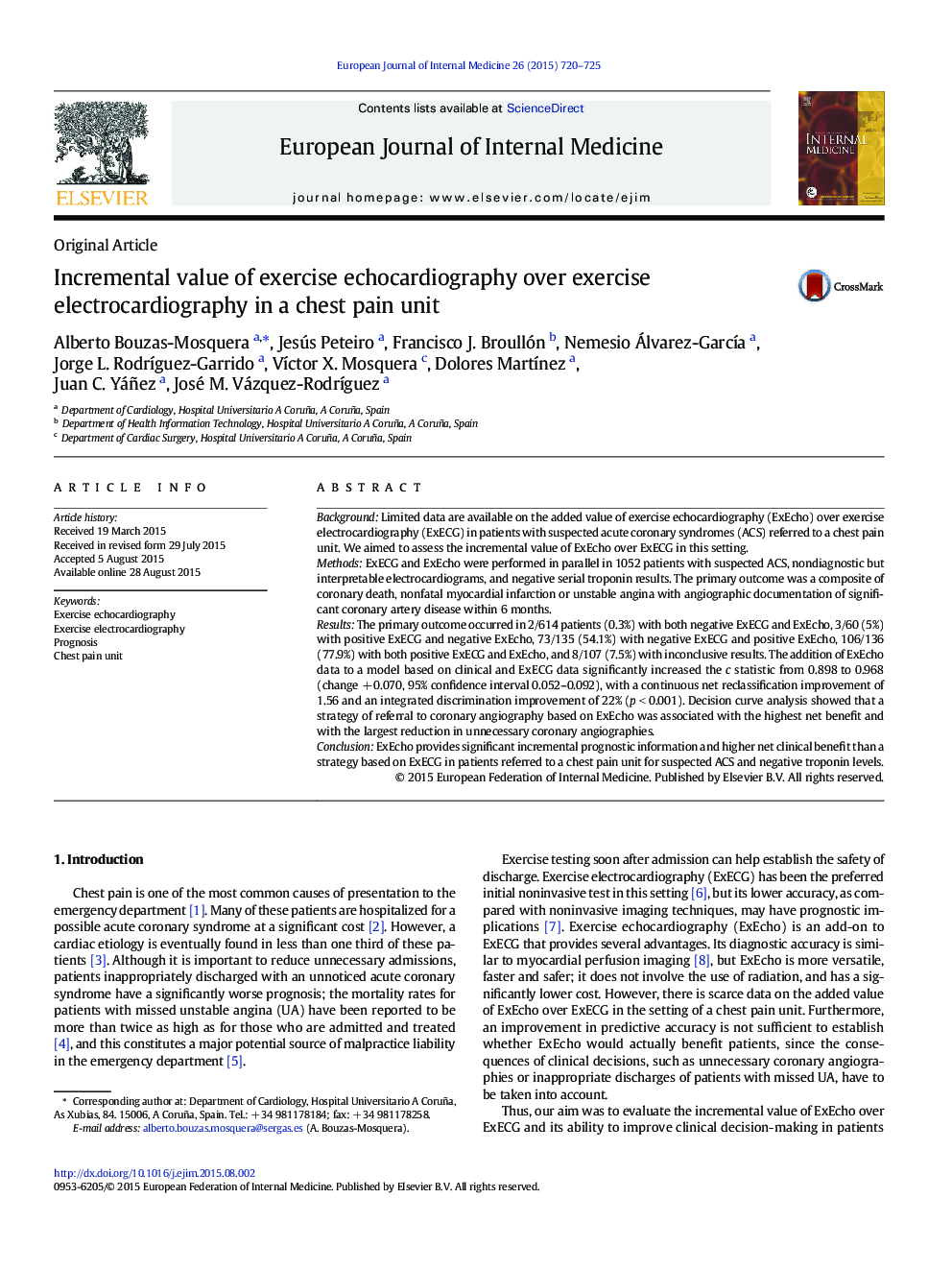| Article ID | Journal | Published Year | Pages | File Type |
|---|---|---|---|---|
| 3466044 | European Journal of Internal Medicine | 2015 | 6 Pages |
•ExEcho provides significant incremental information over ExECG in a chest pain unit.•ExEcho was associated with the highest net benefit.•ExEcho led to the largest reduction in unnecessary coronary angiographies.
BackgroundLimited data are available on the added value of exercise echocardiography (ExEcho) over exercise electrocardiography (ExECG) in patients with suspected acute coronary syndromes (ACS) referred to a chest pain unit. We aimed to assess the incremental value of ExEcho over ExECG in this setting.MethodsExECG and ExEcho were performed in parallel in 1052 patients with suspected ACS, nondiagnostic but interpretable electrocardiograms, and negative serial troponin results. The primary outcome was a composite of coronary death, nonfatal myocardial infarction or unstable angina with angiographic documentation of significant coronary artery disease within 6 months.ResultsThe primary outcome occurred in 2/614 patients (0.3%) with both negative ExECG and ExEcho, 3/60 (5%) with positive ExECG and negative ExEcho, 73/135 (54.1%) with negative ExECG and positive ExEcho, 106/136 (77.9%) with both positive ExECG and ExEcho, and 8/107 (7.5%) with inconclusive results. The addition of ExEcho data to a model based on clinical and ExECG data significantly increased the c statistic from 0.898 to 0.968 (change + 0.070, 95% confidence interval 0.052–0.092), with a continuous net reclassification improvement of 1.56 and an integrated discrimination improvement of 22% (p < 0.001). Decision curve analysis showed that a strategy of referral to coronary angiography based on ExEcho was associated with the highest net benefit and with the largest reduction in unnecessary coronary angiographies.ConclusionExEcho provides significant incremental prognostic information and higher net clinical benefit than a strategy based on ExECG in patients referred to a chest pain unit for suspected ACS and negative troponin levels.
